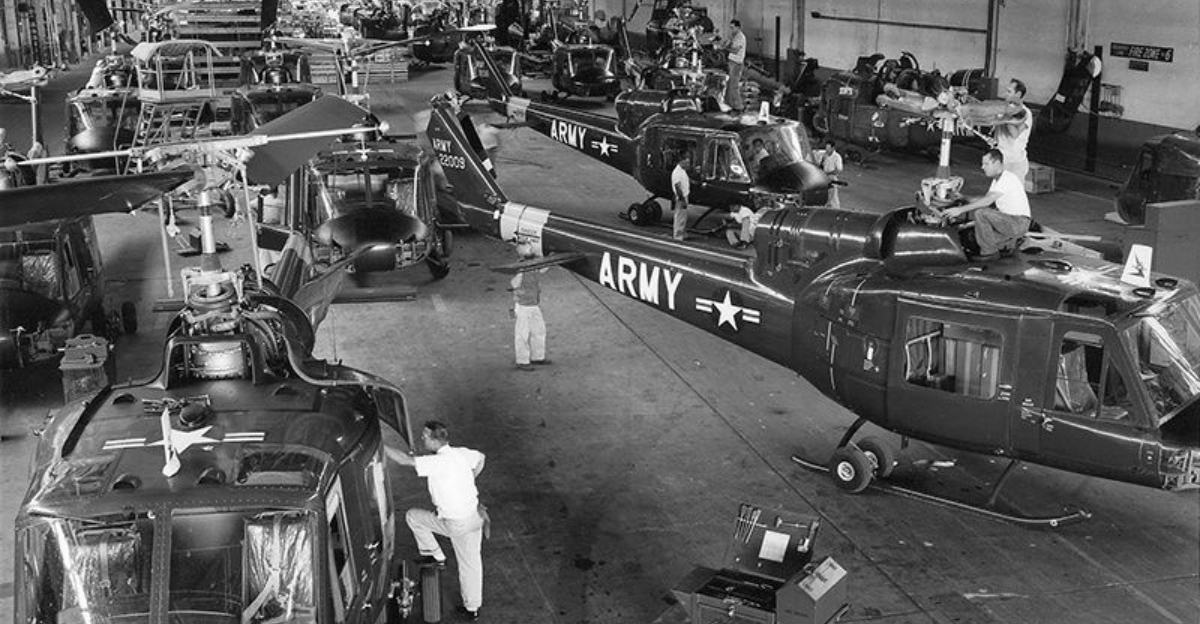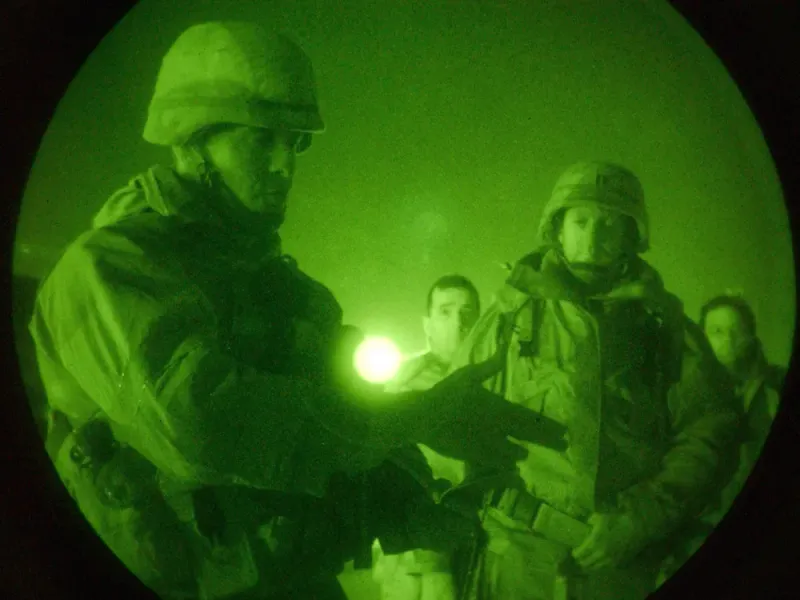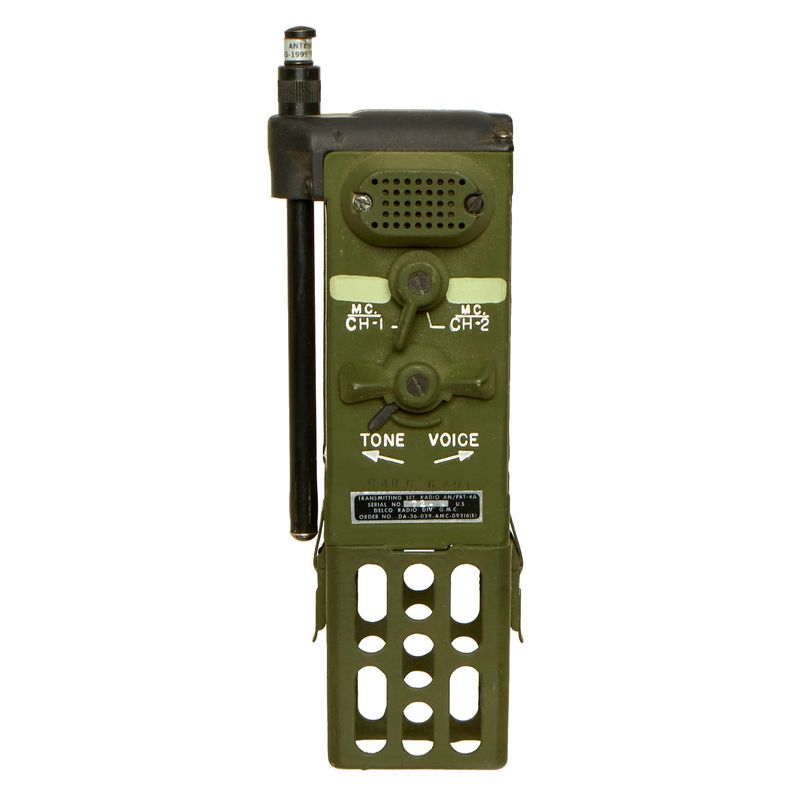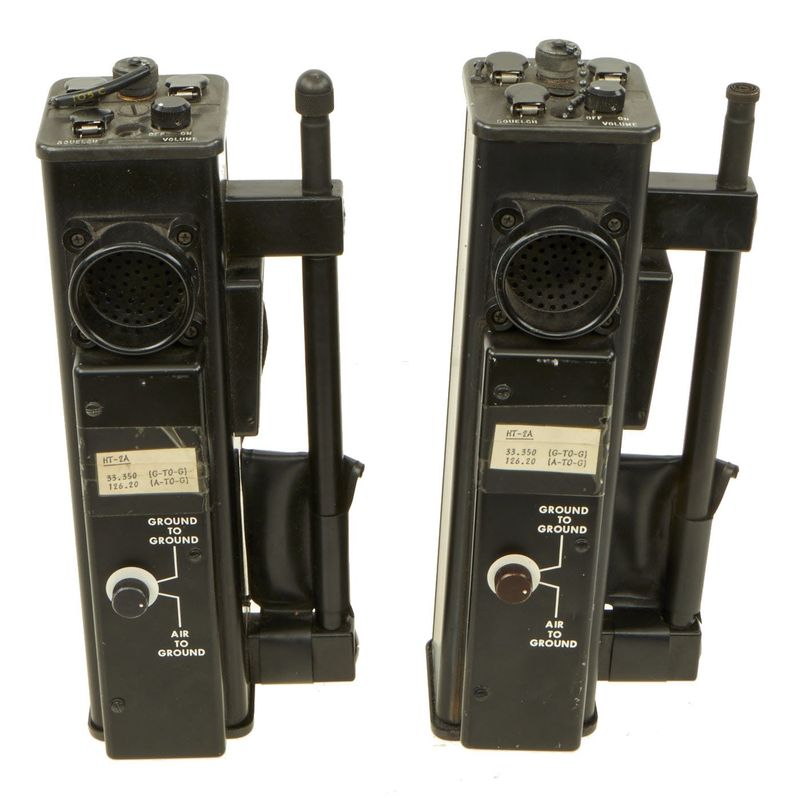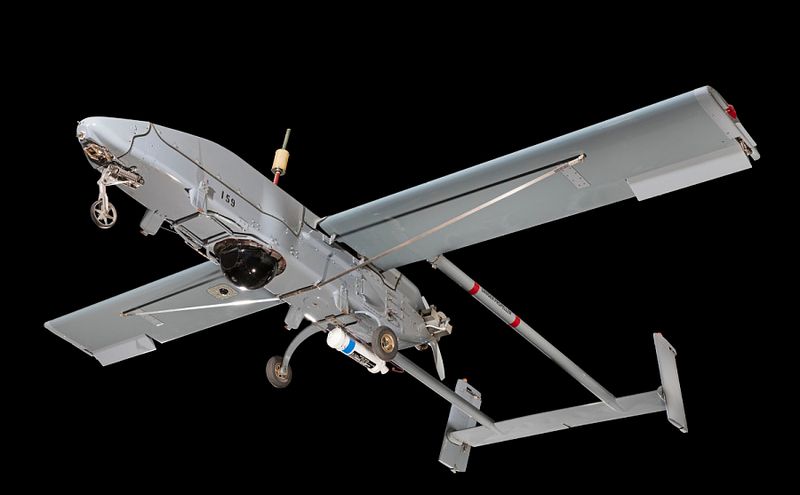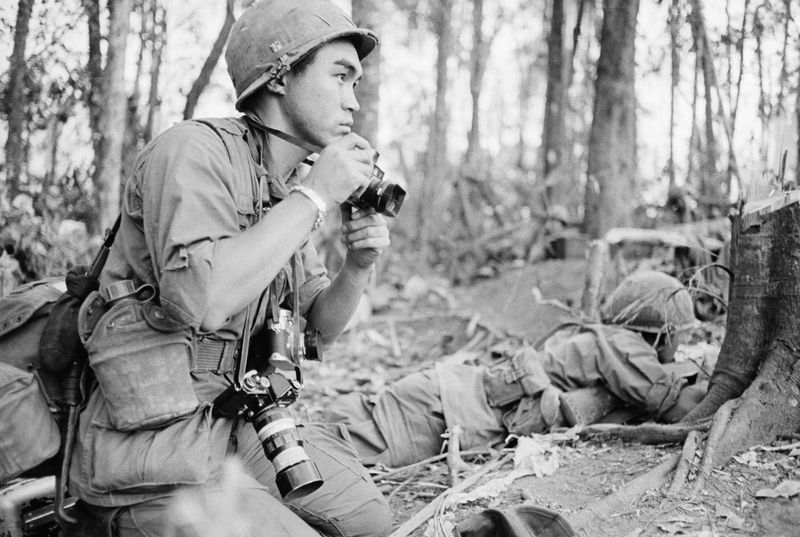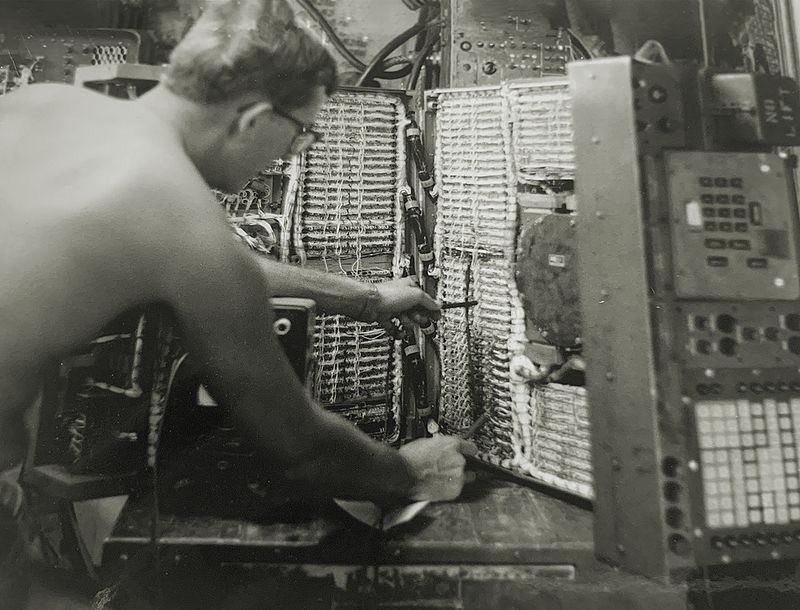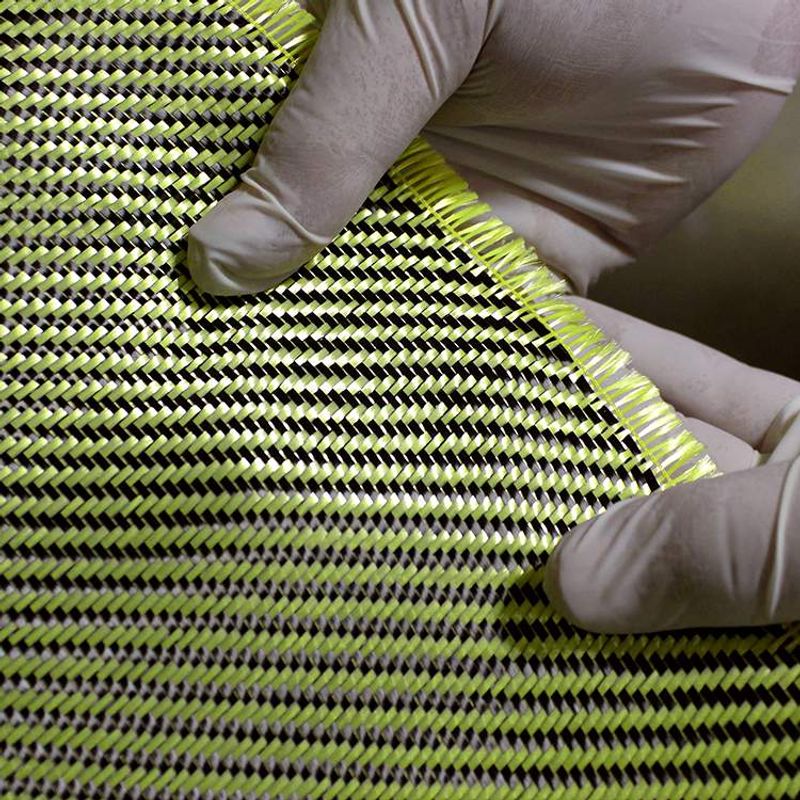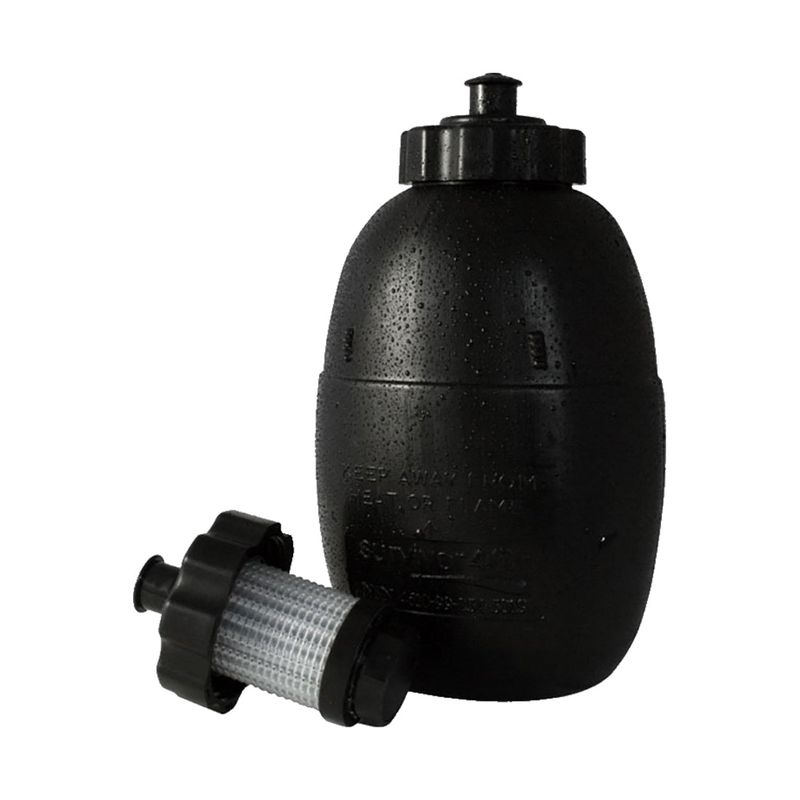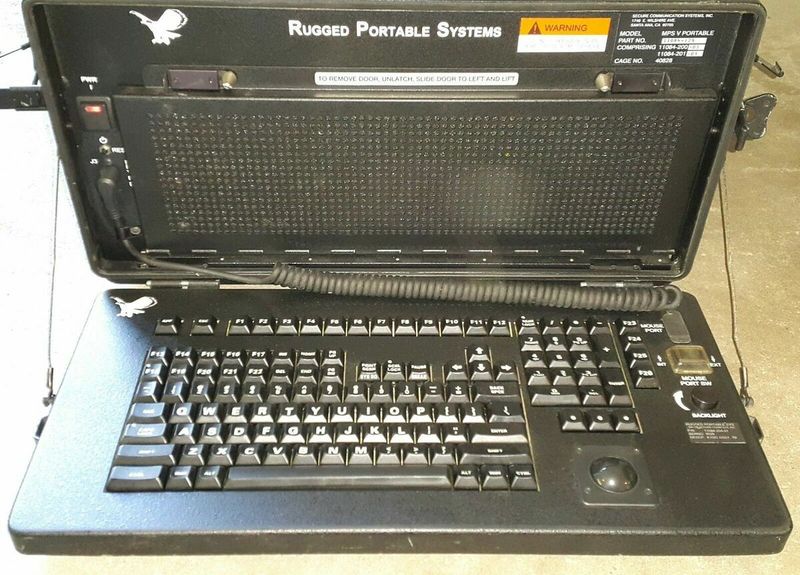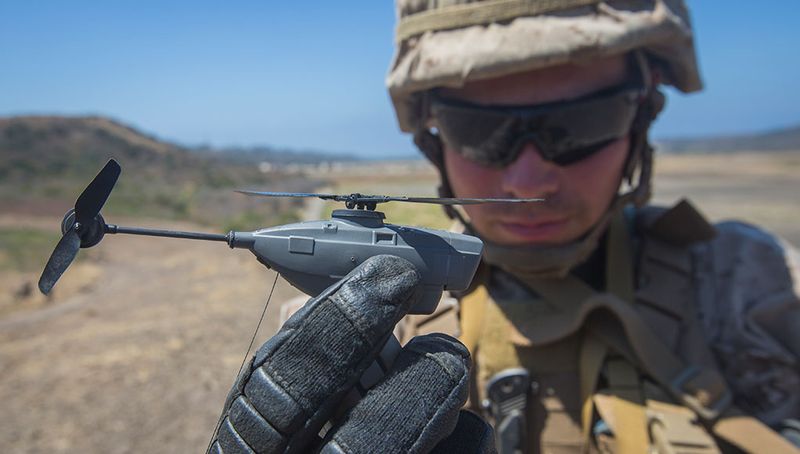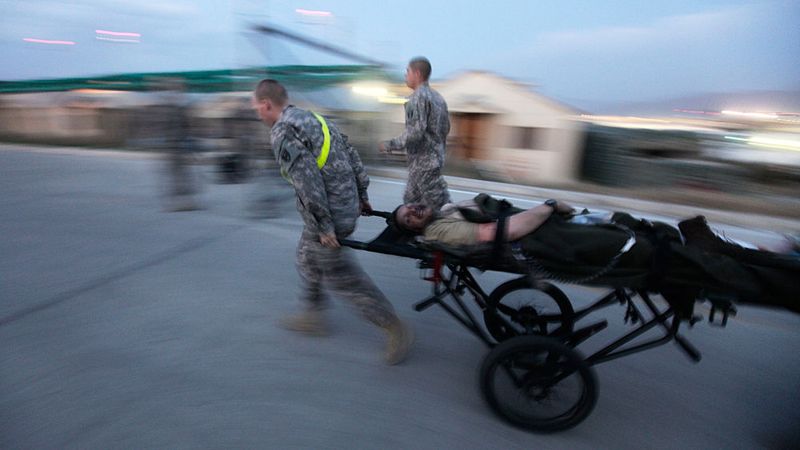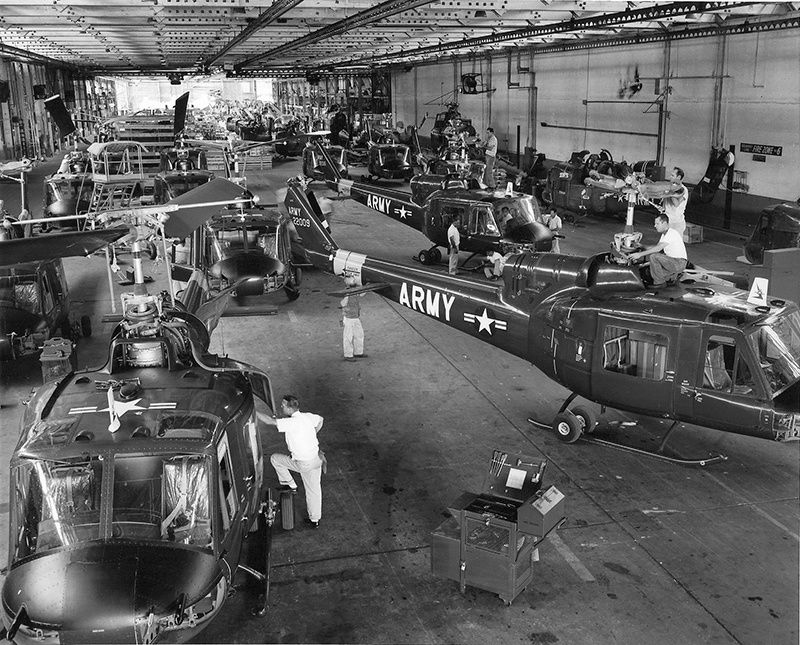The Vietnam War wasn’t just a pivotal moment in history because of the immense political and social implications; it also ushered in technological advancements that continue to shape civilian life.
These innovations, initially born out of the necessity of war, have transcended their original purposes and integrated into everyday civilian applications, significantly improving various aspects of life.
1. Helicopter MedEvac and Rescue Services
Helicopters, most notably the iconic Huey, became symbols of rapid medical evacuation during the Vietnam War. These rotorcrafts swooped down into hostile territories, airlifting injured soldiers to safety.
The success of these missions paved the way for modern air ambulance services, transforming emergency response worldwide.
Today, helicopters are indispensable in civilian life, swiftly transporting patients from accident scenes to hospitals. They save countless lives by cutting down the time it takes to reach critical care.
Their use has expanded beyond medical emergencies, aiding in disaster relief and search operations, proving their versatility beyond the battlefield.
2. Night Vision Technology
Emerging from the shadows of the Vietnam jungle, night vision technology was a game-changer in combat. Soldiers equipped with these early devices could see in almost complete darkness, gaining a tactical advantage.
Fast forward to today, and night vision technology is indispensable in law enforcement and security. Night patrols utilize these devices to maintain safety in low-light settings.
The technology has seeped into civilian life, with photographers and nature enthusiasts using it to capture the world from a new perspective after dusk. It’s a leap from war zones to a guardian of the night.
3. Advancements in Mobile Communications
Amid the dense jungles of Vietnam, communication was vital. Portable radios and early satellite communication systems were developed, ensuring that troops could relay information rapidly.
These innovations laid the groundwork for today’s wireless communication networks. Mobile phones and internet connectivity are direct descendants of these wartime technologies.
From military necessity to everyday convenience, the evolution of portable communication devices has reshaped how we connect, making information accessible at our fingertips anywhere in the world. Our modern digital age owes much to these early communication breakthroughs.
4. Miniaturized Electronics
The Vietnam War presented the challenge of outfitting soldiers with portable equipment without burdening them. This necessity drove advancements in the miniaturization of electronic components.
Today, this innovation is visible in the compact design of cell phones and laptops. Every pocket-sized gadget traces its lineage back to the battlefields of Vietnam.
The pursuit of small, efficient technology continues, influencing everything from wearable tech to implanted medical devices. As a result, the war’s demand for efficiency and portability continues to echo through modern technology.
5. Protective Materials and Gear
The Vietnam War spurred the development of lightweight, impact-resistant materials for soldiers’ gear. This research led to modern composites used in various industries today.
These materials are now found in construction, sports equipment, and personal body armor. They offer protection and durability, reflecting the same principles that safeguarded soldiers.
From the battlefield to everyday life, these materials have transformed safety standards. Whether you’re cycling in a helmet or using a construction tool, the strength of these innovative materials offers peace of mind and protection.
6. Portable Medical Technology
War demands innovation, particularly in trauma care. The battlefield necessity for mobile field hospitals pushed the advancement of portable medical technology during the Vietnam War.
Today, emergency responders use portable diagnostic equipment to provide immediate care, bridging the gap between accident scenes and hospitals.
These innovations have redefined emergency medical response, ensuring that care reaches those in need, no matter the location. From handheld diagnostic tools to portable surgical kits, the legacy of Vietnam’s medical innovations persists in saving lives daily.
7. Drones and Unmanned Aerial Systems (UAVs)
Long before drones became a hobbyist’s delight, unmanned aerial vehicles (UAVs) were developed during the Vietnam War for reconnaissance missions.
These early UAVs laid the foundation for today’s drone technology, now vital in various civilian sectors. Whether it’s aerial photography, agriculture, or environmental monitoring, drones offer a new perspective on everyday tasks.
Their ability to access hard-to-reach areas with ease continues to expand their applications, making drones an indispensable tool in modern society.
8. Digital Imaging and Video Recording
The need to document the Vietnam War propelled advancements in portable cameras and videography. These innovations revolutionized how stories were captured and shared.
Today, these technologies are at the heart of consumer digital photography and broadcast media. High-definition pictures and videos are a staple in everyday life, allowing us to capture memories with unprecedented clarity.
The evolution from bulky equipment to sleek digital devices highlights the journey from war zones to family vacations, transforming how we see and share the world.
9. Environmental and Chemical Detection Technology
The use of chemical agents during the Vietnam War necessitated the development of improved detection and mitigation technologies.
These innovations have since evolved into essential tools for environmental monitoring and public health. Detecting pollutants and ensuring air and water quality are everyday applications of these technologies.
The legacy of these advancements is a safer, healthier world, highlighting the transformation from military applications to crucial environmental safeguards.
10. Integrated Battlefield Computer Systems
In the heat of battle, coordinating efforts was crucial. Early integrated computer systems were developed during the Vietnam War to combine communication, navigation, and data analysis.
These efforts have since evolved into the integrated computer systems that are foundational in civilian life. From business environments to home offices, these systems streamline operations and enhance productivity.
The seamless integration of technology into daily activities owes much to these battlefield innovations, underscoring the ongoing impact of military advancements on civilian life.
11. Kevlar and Advanced Protective Materials
The quest for better protective gear during the Vietnam War led to the development of Kevlar, a lightweight, bullet-resistant fiber.
Today, Kevlar is a staple in law enforcement, sports, and everyday protective gear. Its strength and versatility make it ideal for body armor, helmets, and even sporting equipment.
From safeguarding soldiers to protecting civilians, Kevlar’s legacy is a testament to the enduring impact of military innovations on personal safety.
12. Portable Water Purification Systems
Ensuring access to clean water in the dense jungles of Vietnam was a critical challenge, leading to the development of portable water purification systems.
These innovations have since found their way into civilian life, popular among hikers, campers, and emergency responders. Compact filtration systems provide safe drinking water, showcasing the transition from military necessity to everyday utility.
Their ability to turn almost any water source into drinkable water highlights the significant impact of these wartime innovations on public health and safety.
13. Rugged Field Laptops and Portable Computing
The Vietnam War’s harsh conditions required durable, portable computing solutions for field operations. This necessity spurred the development of rugged laptops.
Today, these designs influence modern rugged laptops used in various civilian applications. From construction sites to outdoor adventures, these devices withstand challenging environments while offering computing power.
Their evolution from military tools to everyday technology underscores the lasting influence of wartime innovations on portable computing.
14. Miniaturized Sensor and Surveillance Technology
The need for effective reconnaissance in Vietnam led to the miniaturization of sensors and surveillance technology.
These innovations have since permeated civilian life, influencing everything from industrial automation to environmental monitoring. Even the smartphones in our pockets benefit from these advancements.
The ability to gather and process information efficiently continues to shape modern technology, highlighting the enduring impact of these wartime innovations.
15. Advanced Medical Evacuation and Trauma Care Techniques
The Vietnam War necessitated advancements in medical evacuation and trauma care techniques, with field hospitals and rapid medevac procedures becoming pivotal.
Today, these techniques are foundational in emergency medicine, informing protocols for trauma care and evacuation. Portable diagnostic equipment further enhances their effectiveness.
The evolution of trauma care from war zones to civilian hospitals underscores the profound impact of these innovations on modern medical practices.
16. Field-Based Rapid Repair and Logistics Systems
The Vietnam War’s dynamic environment required innovative solutions for rapid repairs and efficient logistics.
These innovations have since informed modern practices in commercial repair and supply chain management. Portable maintenance kits and logistics tools are now integral in diverse industries, ensuring efficiency and reliability.
From military necessity to everyday industry, these innovations continue to influence how we manage resources and operations.
17. Development of Infrared and Thermal Imaging
Infrared and thermal imaging technologies emerged during the Vietnam War to enhance visibility in low-light conditions.
Today, these technologies are vital in home security, search and rescue operations, and automotive night-vision systems. Their ability to reveal the unseen has made them indispensable in various civilian applications.
The transformation from military use to everyday technology underscores their enduring impact on safety and security.
